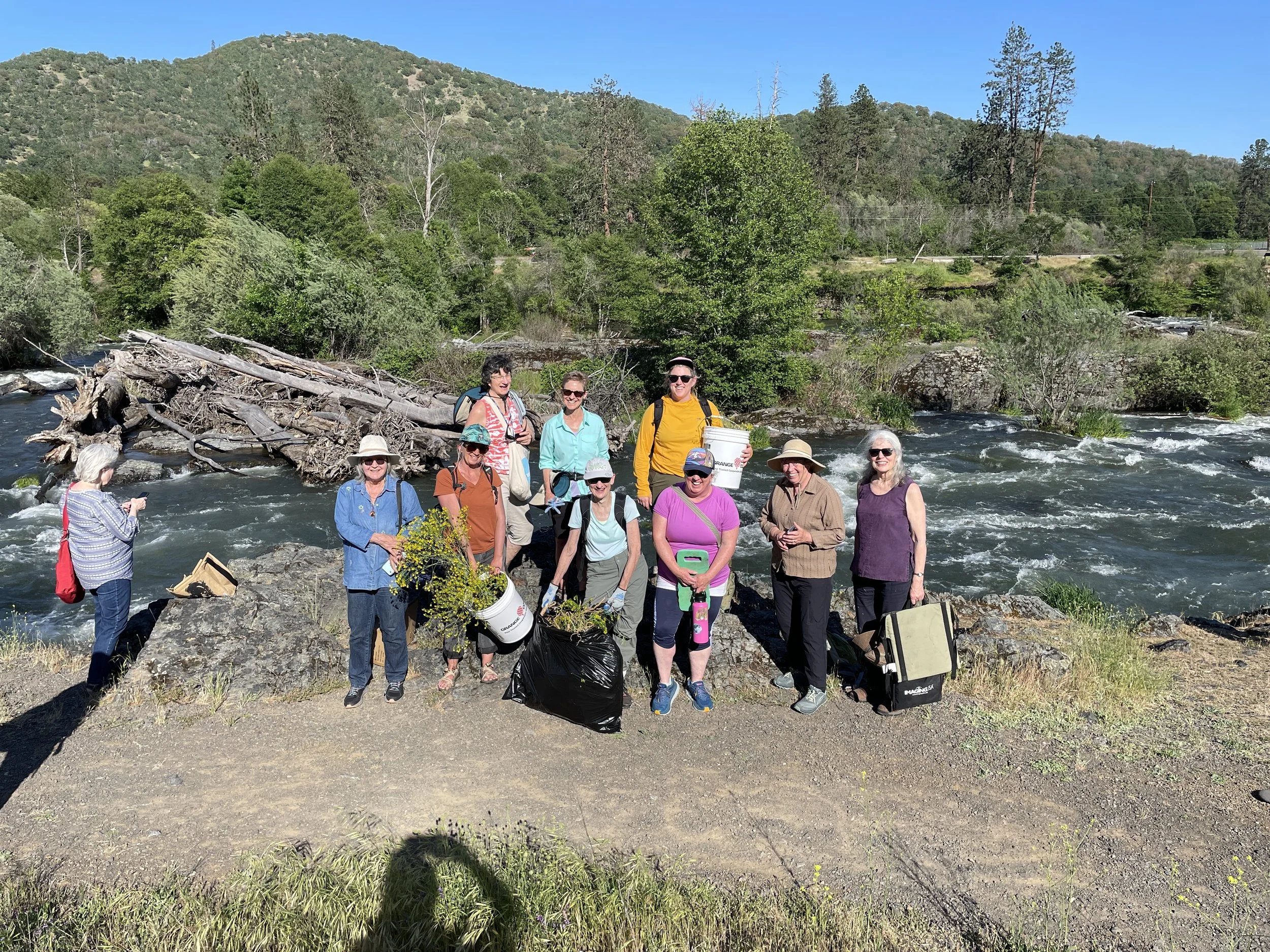SOLC utilized invasive dyer’s woad plant during first fabric dyeing workshop
Dyer’s woad (Isatis tinctoria), native to Russia and cultivated in Europe, was the precursor to indigo. For centuries, the leaves were used to dye garments blue. Unfortunately, it is also an invasive plant that has appeared on the banks of the Rogue River and elsewhere. This past May, Southern Oregon Land Conservancy offered it’s very first ‘Dyeing to Eradicate Invasives’ workshop.
In this two-part workshop, SOLC staff Tara, Rebekah, and Amber led a group of fearless fiber artists through the process of identifying, pulling, and processing dyer’s woad to dye yarn and linen. On the first day of this adventure, the group hiked around Ti'lomikh Falls to identify and remove the target plant. Tara facilitated a nature journaling opportunity to assist in the long-term memorization of the plant characteristics. Attendees were encouraged to focus on identifying markers of this plant as well as how to differentiate it from look-alikes.
On the second day of this workshop, the group gathered at the SOLC office on a cool Sunday morning for snacks and a dye party. With best efforts, the pigment was extracted from 17 pounds of dyer’s woad leaves. Fingers were crossed and breath was held as attendees lowered fibers into the dye vats. After a few minutes, linens and yarns were brought back to the open air and everyone watched as pigmentation appeared in splotches across sheets of linen and skeins of yarn.
As is the way of natural dyes, the results were diverse, with some vats producing more pigment than others. Some sheets of linen produced a Rorschach test of obtuse blue markings, while others seemed to take no color at all. Likewise, some yarns became variegated with blues, whole others picked up faint hints. Should we have used hotter water? More leaves? Shredded the leaves? True explorers of the fiber arts, we speculated how to alter our methods and plan to try again. Non-native plant species have detrimental effects to habitats, and we hope this workshop helps harmonize the goals of removing a non-native plant with fiber arts.


















